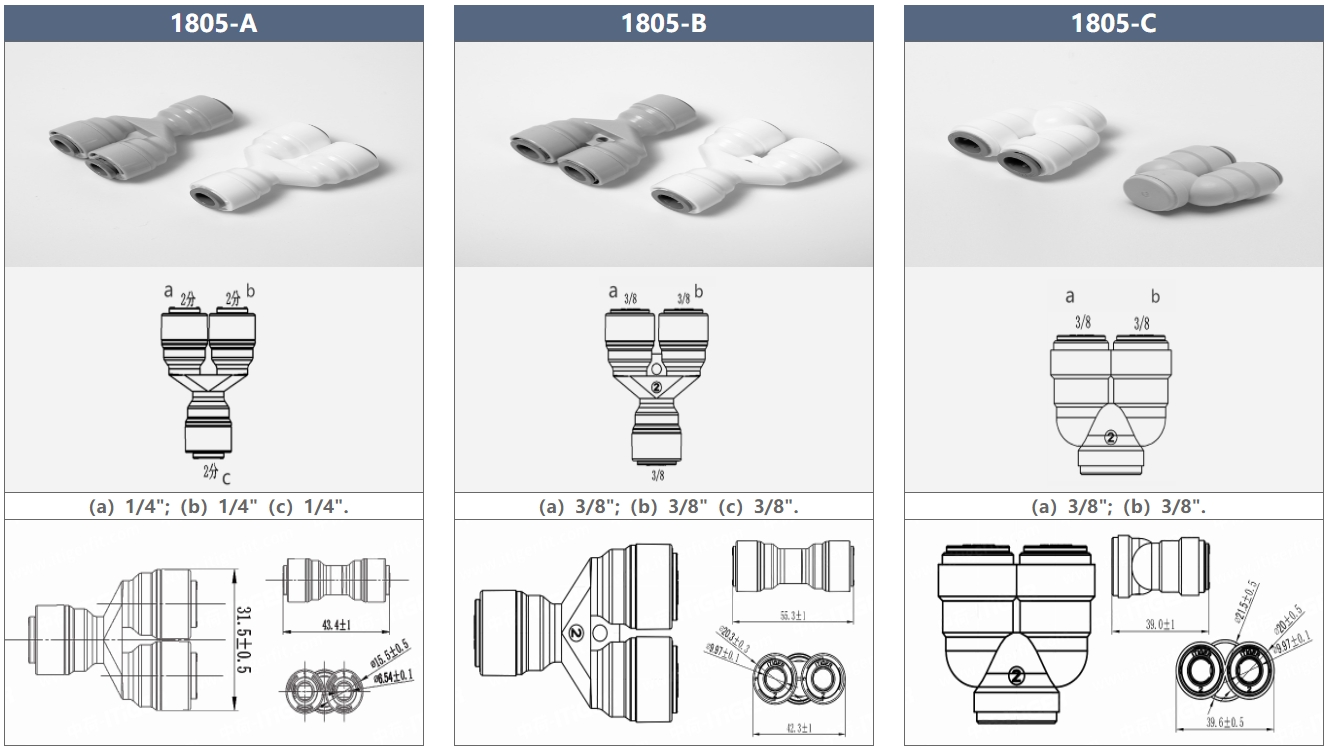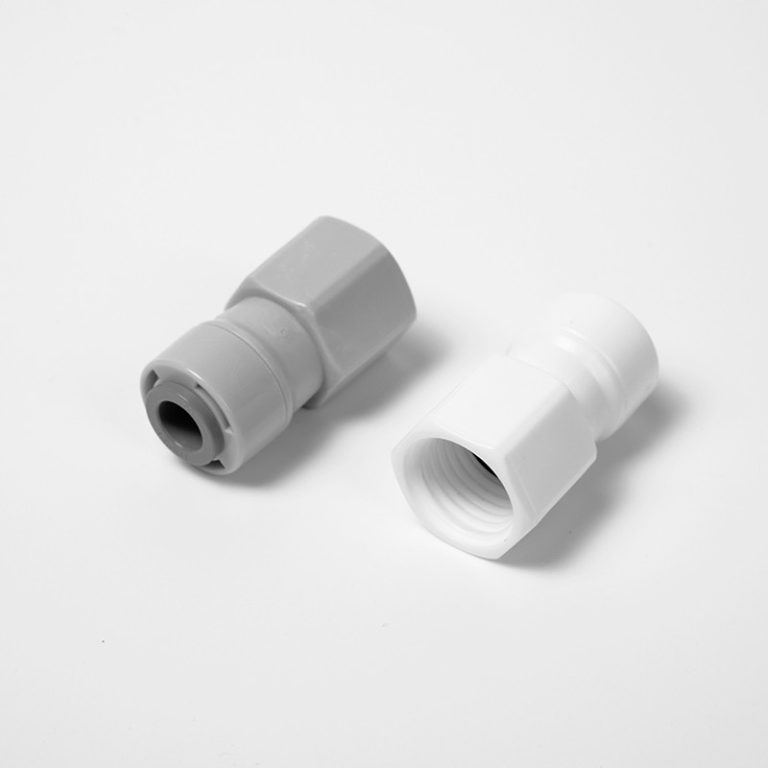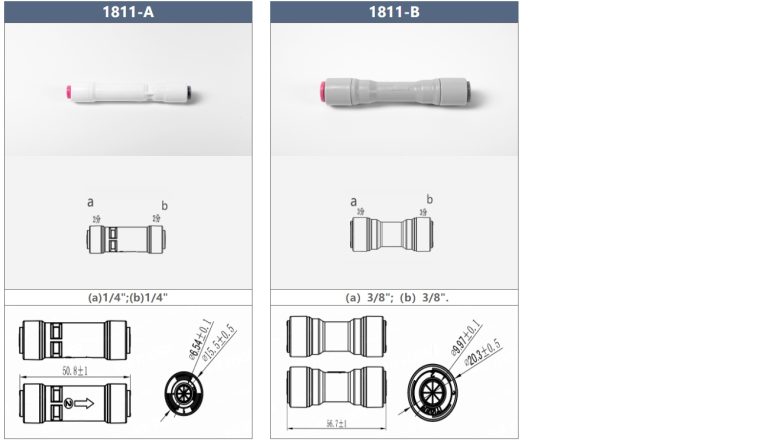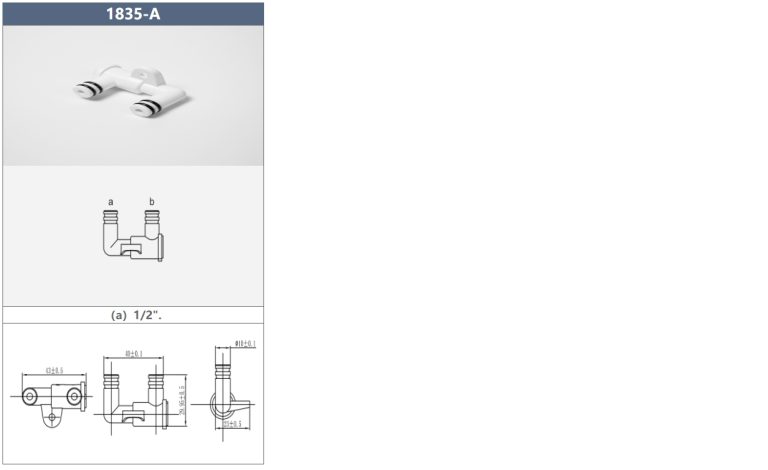Table of Contents
Potential Compatibility Issues Between PVC Fittings and CPVC Pipes
Polyvinyl chloride (PVC) and chlorinated polyvinyl chloride (CPVC) are two common types of plastic piping materials used in plumbing systems. While they may seem similar, there are important differences between the two that can affect their compatibility with fittings. One common question that arises is whether PVC fittings can be used with CPVC pipes.
| Model | Tube(a) | Stem(b) |
|---|---|---|
| 1801-A | 1/4 | 1/4 |
| 1801-C | 1/4 | 3/20 |
To understand this issue, it is important to first consider the differences between PVC and CPVC. PVC is a rigid plastic material that is commonly used in drain, waste, and vent (DWV) systems. CPVC, on the other hand, is a thermoplastic material that is designed for hot and cold water distribution systems. CPVC is able to withstand higher temperatures than PVC, making it suitable for use in hot water applications.
When it comes to fittings, PVC fittings are typically designed for use with PVC pipes, while CPVC fittings are designed for use with CPVC pipes. While it may be tempting to use PVC fittings with CPVC pipes or vice versa, doing so can lead to potential compatibility issues.
One of the main concerns with using PVC fittings on CPVC pipes is the difference in the material properties of the two materials. CPVC is designed to withstand higher temperatures than PVC, so using PVC fittings with CPVC pipes can lead to premature failure of the fittings. This is because the PVC fittings may not be able to handle the higher temperatures that CPVC pipes are designed to withstand.

In addition to temperature concerns, there may also be issues with the fit and seal of PVC fittings on CPVC pipes. Since PVC and CPVC have slightly different dimensions, using PVC fittings on CPVC pipes may result in a poor fit, which can lead to leaks and other problems. It is important to ensure that the fittings are properly sized and compatible with the pipes to prevent any issues down the line.
Another potential issue with using PVC fittings on CPVC pipes is the risk of chemical compatibility issues. While both PVC and CPVC are chemically resistant materials, they may not be compatible with certain chemicals or substances. Using PVC fittings on CPVC pipes may expose the system to chemicals that can degrade the fittings or pipes over time.
In conclusion, while it may be tempting to use PVC fittings on CPVC pipes, it is not recommended due to potential compatibility issues. It is important to use fittings that are specifically designed for use with the type of pipe being used to ensure a proper fit, seal, and long-term performance of the plumbing system. If you are unsure about the compatibility of fittings and pipes, it is best to consult with a professional plumber or manufacturer for guidance. By taking the time to ensure proper compatibility, you can avoid costly repairs and potential issues in the future.
Tips for Properly Using PVC Fittings with CPVC Pipes
When it comes to plumbing projects, using the right materials is crucial to ensure a successful and long-lasting result. One common question that arises is whether PVC fittings can be used with CPVC pipes. While both PVC (polyvinyl chloride) and CPVC (chlorinated polyvinyl chloride) are types of plastic piping materials, they have different chemical compositions and are not always compatible with each other. In this article, we will explore whether PVC fittings will work on CPVC pipes and provide some tips for properly using them together.
First and foremost, it is important to understand the differences between PVC and CPVC. PVC is a rigid plastic pipe that is commonly used for drainage and vent systems. CPVC, on the other hand, is a type of plastic pipe that is specifically designed for hot and cold water distribution systems. CPVC is able to withstand higher temperatures than PVC, making it a better choice for hot water applications.
| Model | Tube(a) | Stem(b) |
|---|---|---|
| 1801-A | 1/4 | 1/4 |
| 1801-C | 1/4 | 3/29 |
When it comes to using PVC fittings with CPVC pipes, the general consensus is that it is not recommended. While PVC and CPVC pipes may look similar, they are not interchangeable when it comes to fittings. The chemical composition of CPVC is different from that of PVC, which can lead to compatibility issues when using PVC fittings with CPVC pipes. This can result in leaks, cracks, and other problems down the line.
If you find yourself in a situation where you need to use PVC fittings with CPVC pipes, there are a few things you can do to ensure a proper fit. One option is to use transition fittings that are specifically designed to connect PVC and CPVC pipes. These fittings are made with materials that are compatible with both types of piping, ensuring a secure and leak-free connection.
Another option is to use a CPVC-to-PVC adapter. These adapters are designed to connect CPVC pipes to PVC fittings, allowing you to use PVC fittings with CPVC pipes without compromising the integrity of the system. It is important to note that these adapters should only be used as a temporary solution and should not be used in areas where they may be exposed to high temperatures or pressure.
When using PVC fittings with CPVC pipes, it is important to follow the manufacturer’s instructions and guidelines. Make sure to properly clean and prepare the pipes and fittings before installation to ensure a tight and secure connection. It is also important to use the appropriate tools and equipment to avoid damaging the pipes or fittings during installation.

In conclusion, while PVC fittings are not recommended for use with CPVC pipes, there are ways to make them work together if necessary. By using transition fittings or CPVC-to-PVC adapters, you can ensure a proper fit and avoid potential issues down the line. Remember to always follow the manufacturer’s instructions and guidelines when working with PVC and CPVC pipes to ensure a successful and long-lasting plumbing system.







